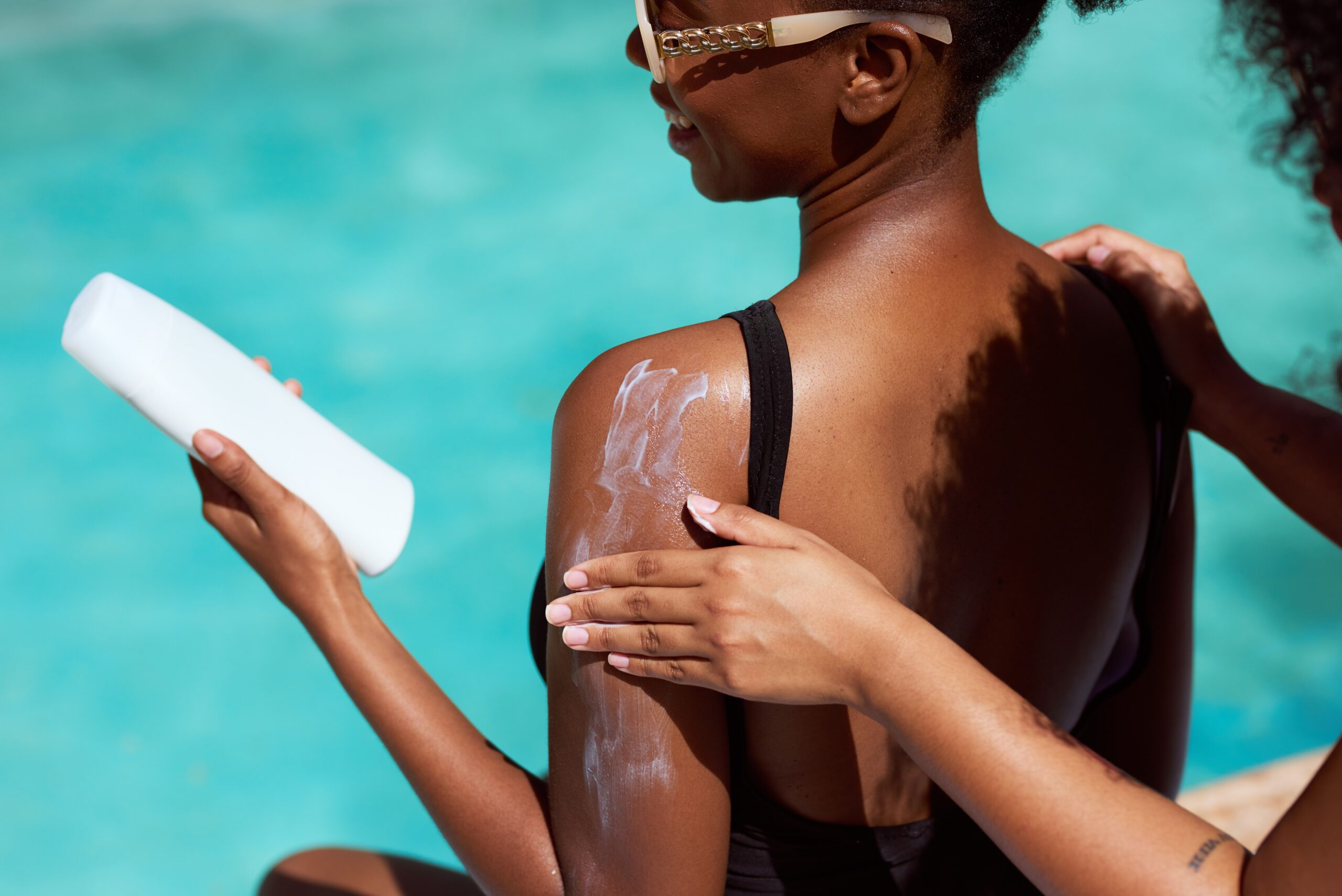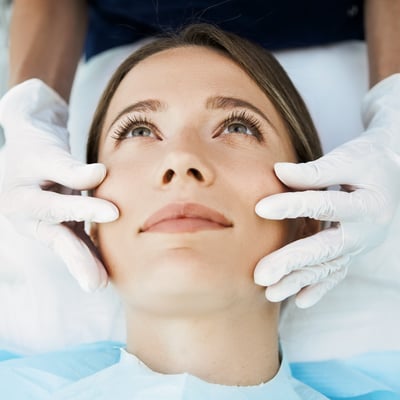
Let’s set the scene: you’ve bravely battled through the minefield of pimples, zits, and all things acne. You’ve survived the teenage years (or perhaps your adulthood acne came out of nowhere…thanks, hormones!) and thought the worst was behind you. But just when you think you’ve finally achieved clear skin, you look in the mirror and see them: acne scars, the leftover souvenirs from your skin’s turbulent past. Great, right?
If you’re suddenly feeling a little self-conscious, don’t worry. You’re not alone. Acne scars are more common than you might think, and luckily, there are proven ways to deal with them. Let’s clear the air about acne scars—what they are, why they happen, and how you can make them less noticeable.
How common are acne scars?
Let’s talk numbers for a moment. Acne itself affects nearly 95% of people between the ages of 11 and 30. That’s already a staggeringly large percentage. But what about the aftermath—those stubborn scars that hang around like the ghosts of pimples past?
Studies suggest that among people who have had acne, somewhere between 30% to 95% develop some form of scarring. That’s quite the range, right? The reason for the wide span is that scarring exists on a spectrum from barely noticeable to more significant, and different studies use different thresholds for what counts as a “scar.”
What we do know is this: if you’re dealing with acne scars, you’re part of a very large community. And while that might not immediately make you feel better, it does mean there’s been significant research and development into solutions for acne scar removal.
What can cause acne scars?
You probably already know that acne is caused by clogged pores, bacteria, and oil. But when it comes to scars, things get a little more complicated. Acne scars form when there’s damage to the skin during the healing process. Think of it like road construction: when the pavement is damaged, crews come in to repair it. Sometimes the repair job is seamless; other times, you can definitely tell where the pothole used to be.
There are two types of acne scars you may notice:
- Hypertrophic (raised) scars: These are the angry, bumpy scars that form when your skin produces too much collagen when healing a blemish. These scars often appear red or pink and may feel firm to the touch.
- Atrophic (depressed) scars: These are the opposite: indented or sunken scars caused by a lack of collagen. These scars can appear as shallow or deep depressions, depending on how much collagen was lost during the healing process.
Some people are more prone to developing acne scars than others, depending on factors like genetics, skin type, and how severe their acne was. While not every breakout leads to scarring, certain habits can make scars worse, such as picking at pimples, popping them, or delaying treatment for severe cystic acne.
Whether your scarring is mild or wild, the good news is that there are a variety of DIY and professional treatments that can help.
At-Home Acne Scar Treatments

There are quite a few at-home options that can help reduce the appearance of acne scars. can do Here are a few ideas that won’t break the bank or require a degree in skincare science:
1. Sunscreen: your new best friend. When it comes to skin health, sunscreen is non-negotiable. Acne scars are very sensitive to the sun, and if they’re exposed to UV rays, they get darker and harder to get rid of. So, if you’re not already applying sunscreen every day, it’s time to start. Choose a broad-spectrum sunscreen with SPF 30 or higher, and apply it generously to all exposed areas of your face—even on cloudy days!
2. Exfoliate (but not too much!). Gentle exfoliation can help speed up the skin’s renewal process by removing dead skin cells and encouraging fresh skin to take its place. But here’s the catch: You don’t want to over-exfoliate. Too much scrubbing can irritate your skin and slow or prevent the scars from healing, so keep it to two or three times a week so your skin has time to heal in between.
A mild chemical exfoliant with ingredients like AHAs (alpha hydroxy acids) or BHAs (beta hydroxy acids) can gently encourage cell turnover and fade dark spots over time. If you’re going the scrub route, look for something with finely milled particles to avoid any harsh abrasions.
3. Vitamin C to the rescue. If you’re hoping to lighten dark spots (known as post-inflammatory hyperpigmentation), vitamin C may help. This brightening powerhouse helps fade discoloration and even out skin tone, making scars less noticeable. You’ll find vitamin C serums at most drugstores or beauty counters, and they’re easy to incorporate into your skincare routine.
4. Retinoids: the all-star ingredient. Whether bought over-the-counter or with a prescription from your dermatologist, retinoids are often hailed as the superheroes of skincare. These derivatives of vitamin A encourage cell turnover, which helps with scar healing. They can also help improve the texture of your skin by stimulating collagen production. However, retinoids can be potent, so it’s best to start with a lower concentration and gradually build up. And don’t forget to apply sunscreen, because retinoids can make your skin more sensitive to the sun.
5. The power of rosehip oil. This oil is packed with essential fatty acids and vitamin A, which work together to repair damaged skin. Some patients have found that rosehip oil can help reduce the appearance of scars and improve skin texture over time. It’s gentle and soothing, making it a great option for those with sensitive skin. Just a few drops massaged into your face at night could make a difference.
How to get rid of scars from acne: call in the professionals
If you’ve tried everything at home and still find yourself staring at those scars in the mirror, it might be time to consider some professional treatments for acne scarring. Dermatologists have a variety of tools at their disposal to help smooth out acne scars and make your skin look fabulous again. Here are a few options:
1. Chemical peels
Chemical peels are like a reset button for your skin. A dermatologist applies a chemical solution to your skin that exfoliates the surface and removes damaged skin cells. Over time, this can help lighten dark spots and improve the texture of your skin, making acne scars less noticeable.
2. Microneedling
Microneedling sounds a little intimidating, but it’s actually a safe and highly effective treatment. Tiny needles are used to create controlled “micro-injuries” in your skin, which stimulates collagen production and helps fill in depressed scars. It’s like giving your skin a little nudge towards smooth healing.
3. Dermal fillers
Injectable fillers can plump depressed acne scars, creating a smoother surface. They are very effective but may only give temporary results lasting about 6-18 months.
4. Laser treatments
Laser treatments, like fractional CO2 lasers, are another option to target acne scars. These treatments work by using light energy to break down scar tissue and stimulate new collagen growth. The result? Smoother, more even skin over time.
5. (Minor) surgery
Minimally invasive surgical options like scar subcision and punch elevation can be used in conjunction with other treatments to address the most stubborn acne scars. Subcision releases tethered scars and stimulates collagen production, while punch elevation removes deep scars and lifts the skin for a smoother appearance.
The bottom line: a path toward healing
Acne scars are incredibly common, but they don’t have to be permanent fixtures on your skin. With the right approach—whether that’s professional treatment, consistent at-home care, or a combination of both—significant improvement is possible.
The journey to clearer, smoother skin is often a marathon, not a sprint. It requires patience, consistency, and sometimes a willingness to try different approaches until you find what works for your specific type of scarring.
So the next time you find yourself having that conversation with your mirror about those reminders of past breakouts, remember: you’ve got options, you’ve got company, and most importantly, you’ve got hope for healing.
To learn more about all the options available to you, find a Forefront location near you today.





